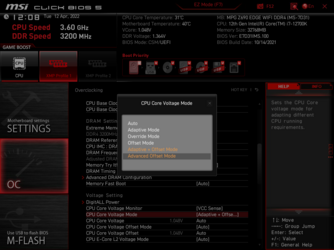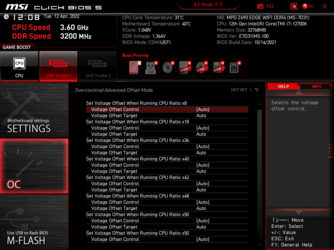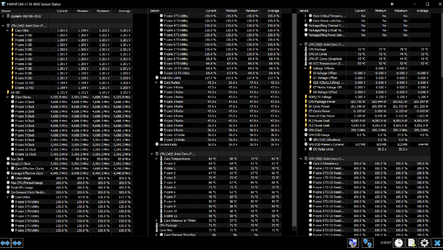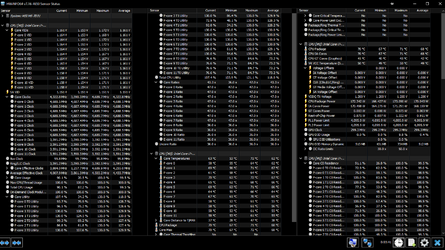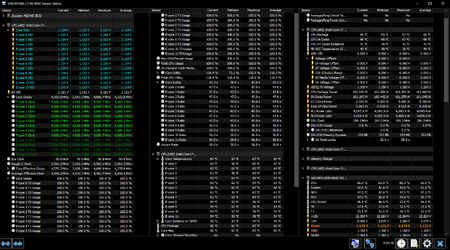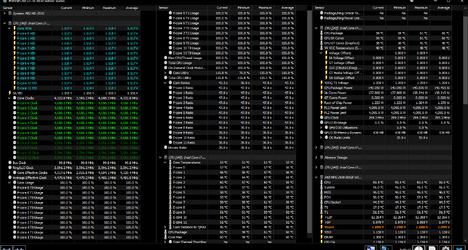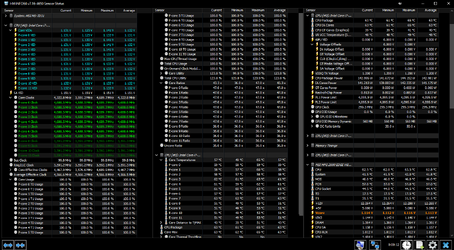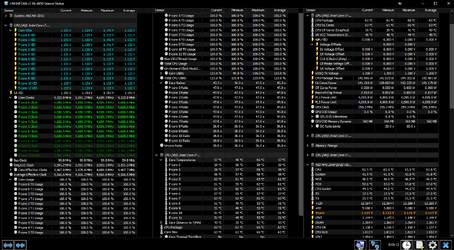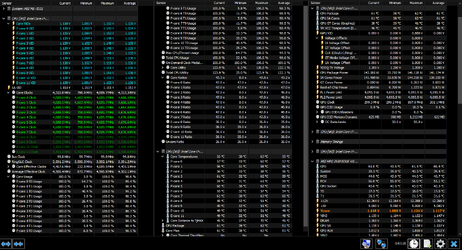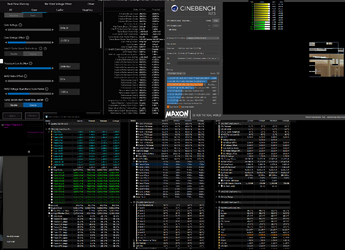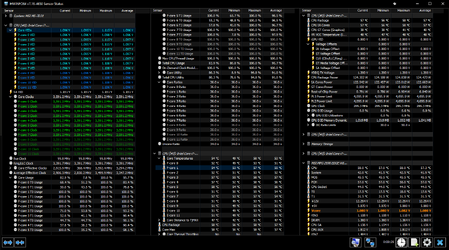- Joined
- Oct 18, 2005
- Location
- Chicago Burbs
My main reason for posting this here is so if anyone who knows something about this is so-inclined, I am open to suggestions/insight that can be offered.
My plan has been and still is to see how far I can undervolt, and maybe even underclock, to minimize wattage being pulled by this 12700k, to minimize heating up my ezbake oven of a room this summer. Similar to what I did with my GPU, I'll probably end up mapping out a bunch of potential stability points, working my way down in voltage until I get obvious instability, then downclocking, and pushing down voltage even more. In preparation for this I thought I'd try to learn what I need to know through edumacation.
After about a combined 2-5 hours watching some videos, reading some stuff, that goes into all the different mechanisms/settings of Alder Lake, I've come to two conclusions.
1) If you need a good sleep aid, nothing will beat watching these videos.
2) Unless you plan on getting an unofficial bachelor's degree in Alder Lake tweaking, best to just stick to some quick n' dirty methods.
So I've begun in earnest trying to use the lowest effort method to map out minimum voltages for different clocks on the p-cores, and maybe I'll even mess with the e-cores, but they're so god damn efficient to begin with, why bother underclocking those. I know I'm probably leaving some wattage savings on the table, and some clock rates on the table, by doing it the easy way, but if it's literally 200 times easier to do it this way, I think I'm fine with that.
For initial testing I'm messing with Intel XTU, using the usual adaptive voltage with the processor doing its usual per-core automatic core ratio adjustment based on utilization. The only thing I'm changing is the voltage offset, which I can see is affecting the voltages of all states from idle to full load. When going into the MSI BIOS, it appears that using the adaptive voltage + offset method, and entering in a minus offset, is leading to similar/same results as what I'm doing in XTU.

So I've been slowly easing into a voltage offset down, switching between Cinebench R23 and Prime95 small FFTs with AVX enabled. So far haven't run into any problems.
My main concern is potential instability at idle & how to test for that. It seems the minimum core ratio at idle is 5x. And the voltage offset certainly affects all the individual ratios. This is good. I like the idea of being able to save power at all levels of CPU draw. However, it also massively complicates things when it comes to squeezing out every last bit of power savings or overclock, especially since how do you stability test those lower core multiplier ratios? I can't figure out how to manually set them below 36x on the p-cores. Instead, it seems like the default thing to do would just be load-testing increasingly lowered voltage offsets until finding the potential stability limit, and then the only thing to do would be to use the system normally or let it sit at idle and just wait until something goes wrong. If it never does, it's "stable" and if it does, then the voltage can be bumped up one notch. This to me seems like a horrible way of going about things, but I can't think of anything better.
This is where I'm at right now and still pushing lower on the voltages. I decided to occasionally test at 36x just to see if the voltage curve is stable for "maximum underclocking" on the p-cores at whatever offset I'm testing. But this screenshot is from 47x.

This is testing -0.040v btw, and here's a screenshot for testing 36x.


My plan has been and still is to see how far I can undervolt, and maybe even underclock, to minimize wattage being pulled by this 12700k, to minimize heating up my ezbake oven of a room this summer. Similar to what I did with my GPU, I'll probably end up mapping out a bunch of potential stability points, working my way down in voltage until I get obvious instability, then downclocking, and pushing down voltage even more. In preparation for this I thought I'd try to learn what I need to know through edumacation.
After about a combined 2-5 hours watching some videos, reading some stuff, that goes into all the different mechanisms/settings of Alder Lake, I've come to two conclusions.
1) If you need a good sleep aid, nothing will beat watching these videos.
2) Unless you plan on getting an unofficial bachelor's degree in Alder Lake tweaking, best to just stick to some quick n' dirty methods.
So I've begun in earnest trying to use the lowest effort method to map out minimum voltages for different clocks on the p-cores, and maybe I'll even mess with the e-cores, but they're so god damn efficient to begin with, why bother underclocking those. I know I'm probably leaving some wattage savings on the table, and some clock rates on the table, by doing it the easy way, but if it's literally 200 times easier to do it this way, I think I'm fine with that.
For initial testing I'm messing with Intel XTU, using the usual adaptive voltage with the processor doing its usual per-core automatic core ratio adjustment based on utilization. The only thing I'm changing is the voltage offset, which I can see is affecting the voltages of all states from idle to full load. When going into the MSI BIOS, it appears that using the adaptive voltage + offset method, and entering in a minus offset, is leading to similar/same results as what I'm doing in XTU.
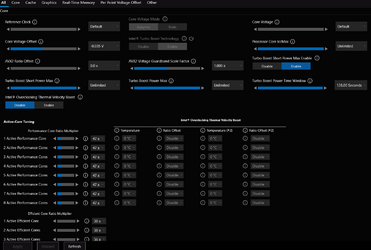
So I've been slowly easing into a voltage offset down, switching between Cinebench R23 and Prime95 small FFTs with AVX enabled. So far haven't run into any problems.
My main concern is potential instability at idle & how to test for that. It seems the minimum core ratio at idle is 5x. And the voltage offset certainly affects all the individual ratios. This is good. I like the idea of being able to save power at all levels of CPU draw. However, it also massively complicates things when it comes to squeezing out every last bit of power savings or overclock, especially since how do you stability test those lower core multiplier ratios? I can't figure out how to manually set them below 36x on the p-cores. Instead, it seems like the default thing to do would just be load-testing increasingly lowered voltage offsets until finding the potential stability limit, and then the only thing to do would be to use the system normally or let it sit at idle and just wait until something goes wrong. If it never does, it's "stable" and if it does, then the voltage can be bumped up one notch. This to me seems like a horrible way of going about things, but I can't think of anything better.
Post magically merged:
This is where I'm at right now and still pushing lower on the voltages. I decided to occasionally test at 36x just to see if the voltage curve is stable for "maximum underclocking" on the p-cores at whatever offset I'm testing. But this screenshot is from 47x.
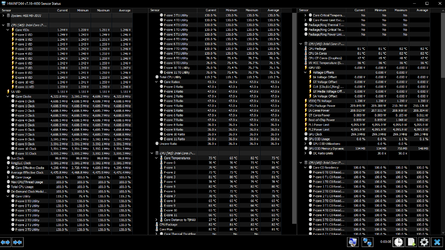
Post magically merged:
This is testing -0.040v btw, and here's a screenshot for testing 36x.
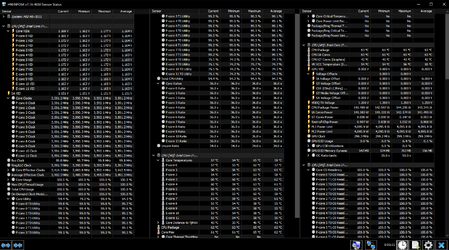
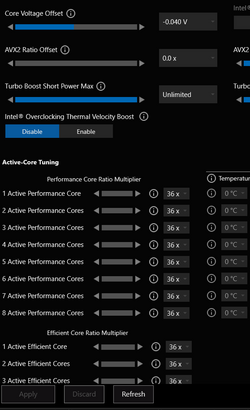
Last edited:
